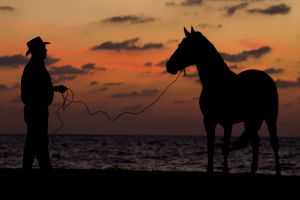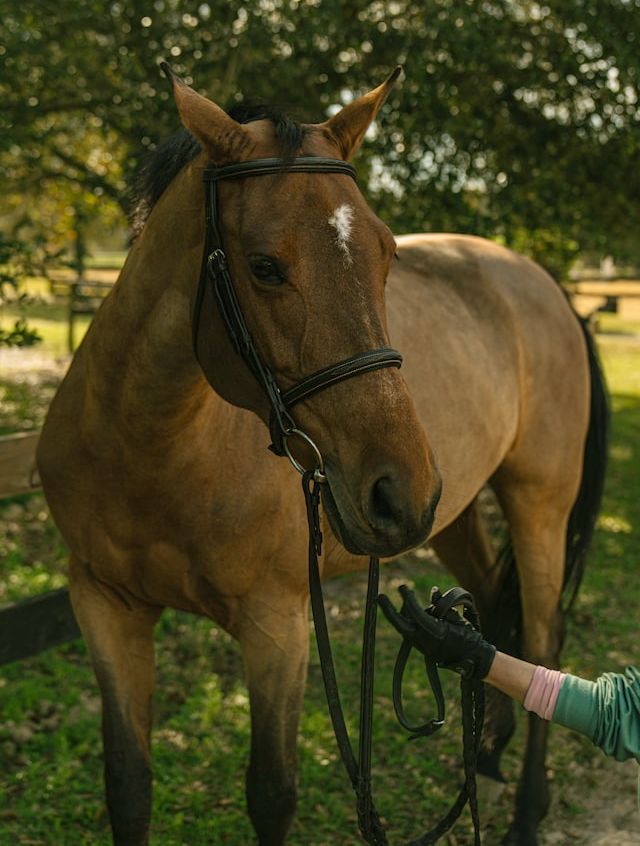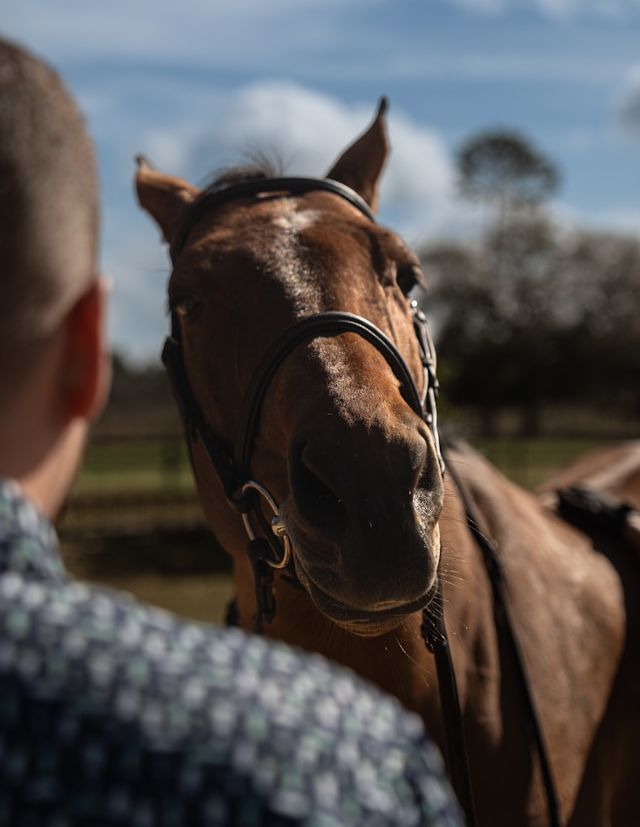How to Become the Alpha Horse: Training Your Horse to Obey You
No doubt you’ve been told that you need to show your horse who is boss; that he should always look to you for instruction, rather than bossing you around. But your horse is much bigger and stronger than you are, and he always will be. So how do you become the Alpha horse – in horse language, the horse (or person) who decides exactly what and when something should be done (or not done, in the case of undesirable behaviour).
The following article will introduce you to the pecking order common among any horse herd, whether that is a wild herd running free, or a herd of two that consists of yourself and your horse or pony. As you will see, displaying the right combination of confidence and body language can quickly establish you as the Alpha horse or, as Andy Curry explains, the General in charge!
How To Get Your Horse To Obey You And Look To You For Instruction
In the animal kingdom there is a pecking order. Richard Shrake points out that it’s organized a lot like the military, with a pecking order that goes from General down to Private. The General will get first pick of the food, decide where to go and when, and so on.
The “second in command” will act just like the General but he won’t pick on the General because the General dominates him. This string of command continues all the way down to the bottom of the pecking order. Any time a new animal comes into the group then the pecking order shifts. Knowing this information, you can use it to your advantage. You can make yourself the leader in the horse’s eyes. He’ll look to you for instruction. He’ll obey you.
If you have a dominant horse it will be instinct for him to let a more dominant being make the decisions. In this case the dominant being will be you. You will become leader by using your body language to show you are confident. Being dominant doesn’t mean you’re being aggressive.
On the other hand, if your horse is the General, you may have to be more assertive. Make sure your horse doesn’t think you’re a threat. It’s easy to come across as threatening when you’re being assertive. If your horse feels threatened he’ll fight back and you can’t win. And if you are doing horse training, you will find it hard to get results.
In the wild, dominant and aggressive horses will make their bodies tight and make sudden moves with fury while getting into the other horse’s space. The weaker horse will concede and move out of his space. Think of it as the General screaming an order and the Private is obeying.
Slow movements tend to draw one horse to another. Horses express calmness with relaxed, slow steps. This is how they welcome other horses in their space. See Keep Calm While Working with Horses for tips on this important human behaviour.
If a horse is trying to show you he’s the General you may see a clamped-down tail with pinned ears. To get him to accept you as the General you will move him out of his space. You do this by matching any quick moves he makes with your own quick moves. The trick is to make the first strike before he does.
One way to do this is with a quick arm movement towards him – almost like you’re violently shooing away some pesky flies. Also, you can use an aggressive tone of voice towards a horse if he’s being aggressive.
How can you tell if he’s conceding to you? If he turns his head or drops it, relaxes his tail, begins chewing, or takes a deep breath, then that’s how you know. If any of these happen he’s saying, “Okay, I’ll do what you say because I want to listen to you.” Pay attention to these clues that tell you your horse is in the Private mode (the follower) instead of the General mode.
When you go into the round pen to work with your horse first check to see how he responds to you. If he rubs his head on you or swings his rear end toward you then he’s challenging your position in the pecking order. If you’re with a horse that’s not dominant you want to make sure he has confidence. Thus, be very careful not to be threatening.
Author Andy Curry is a nationally known horse trainer and author of several best selling horse training and horse care books. He’s also the leading expert on Jesse Beery’s horse training methods.


